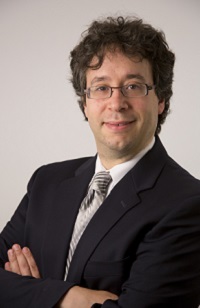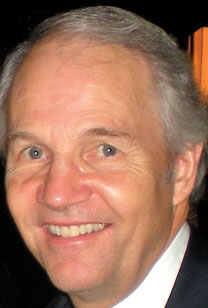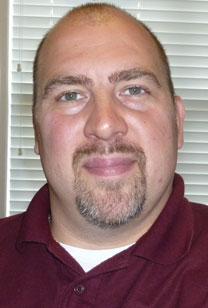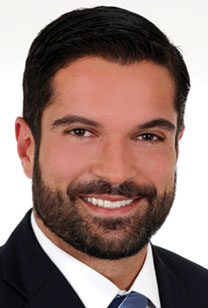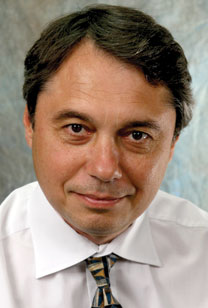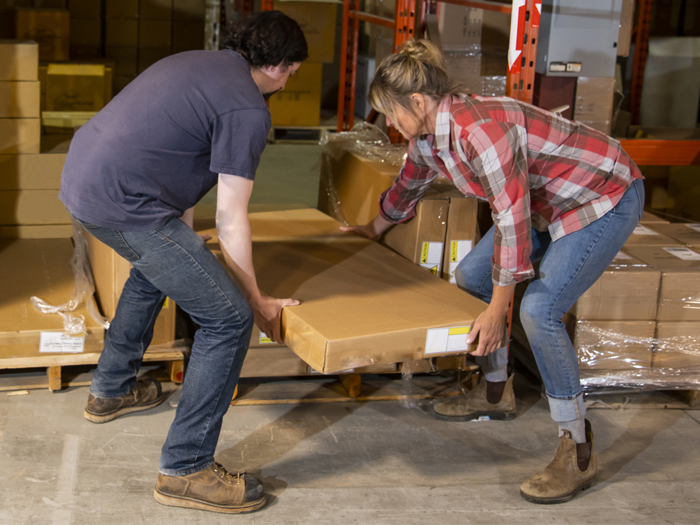Risk Innovators
2013 Risk Innovators

Joseph Rizzo: Meeting the D&O Challenge
D&O Insight is an innovative model that takes a prospective approach to addressing Side A D&O risks.
Aon’s D&O Insight product grew out of a desire on the part of clients who sought to gain a more complete understanding of the Side A costs underlying their D&O risks. Historically, that’s been a major challenge for insurers, especially when it came to blending an effective Side A program with standard Side B and Side C coverage.
Many approaches were developed to address shareholder class-action risks, but these methods did not specifically address Side A risks. Without contemplating the coverage of the policy, the true value of the insurance would be unknown.
Side A D&O insurance is intended to cover directors and officers when their company cannot indemnify them, in the case of a bankruptcy, for example, said Joseph Rizzo, a senior consultant and actuary at Aon Risk Solutions in Chicago. Rizzo was the main driver behind Aon’s innovative D&O Insight product.
Side B coverage, he said, is coverage for claims against directors and officers where the company does indemnify them, and Side C coverage is coverage for the company itself.
“The D&O Insight product innovation takes a prospective approach to determine the risk of D&O claims,” he said. “It goes beyond traditional approaches, which were retrospective reviews of past events, which endeavored to compare those events to the current company profile.”
Rizzo added that “the difference between what we’re doing and what’s in the market elsewhere is, first, that we’re covering all elements of D&O insurance — Side A, Side B and Side C — and secondly, that our analysis projects the stock price forward to figure out what the potential for loss in the next year is and, if there is an event, how much money directors and officers could lose.”
“This product, which has been on the market for a year or so, covers everything that goes into that buying decision,” he said, “including how much in limits they’re buying as well as the price and value of the insurance.”
D&O Insight uses market factors to project what the client’s risks could look like in a future policy period and, from that analysis, projects the risks to all types of D&O losses that can emerge, he said.
“The financial markets inform the model, which provides information to generate potential losses,” said Rizzo, who holds a B.A. in Mathematics from the University of Chicago.
The product’s goal is to stay flexible and forward looking, “to leverage market measures such as stock volatility, liquidity issues, mergers and acquisitions complications, and regulatory matters when determining a client’s risk,” he said.
By modeling the potential risks that can occur in D&O litigation, D&O Insight examines insurance deductible limits, costs and the associated impact on an organization, Rizzo said. “The analysis calculates the value of the current insurance to the client.
“The same information can determine the benefit of alterations to the program,” he said. “The analysis also gives valuable information to communicate to directors and officers about the level of protection the insurance provides by calculating the probability that the Side A limit would be exhausted.”
Rizzo said he and his D&O Insight team deal primarily with risk managers, though their information may be taken up to the CFO, treasurer or even the CEO.
Working with Rizzo on developing D&O Insight were Stephanie Vogel in Aon’s actuarial and analysis area and Eric Boyum in the company’s Financial Services Group.
When it comes to marketing D&O Insight, Aon’s Sara Hakim, based in Calgary, Alberta, works closely with Rizzo.
Hakim, vice president of the Financial Services Group for Aon Risk Solutions, said Rizzo was the architect of the product.
“The tool that Joe created has been marketed mainly as a governance tool for directors and officers,” she said.
“What sets our tool apart is it allows a company to drill down to specific company stock performance to gauge a company’s potential risk.
“What I’ve appreciated about Joe is that he is an actuary by training so he has applied that stringent methodology to constantly improving the D&O Insight product. His technical expertise is excellent.”
Jeff Greene: Let’s Talk
Jeff Greene of MedEncentive developed a system that creates checks on whether doctors and patients are clearly communicating about their course of treatment.
Jeff Greene did not set out to change the world, or even to change the nature of the relationship between physicians and their patients. What he did set out to do was to keep his company from going out of business.
What he built was an online system that allows doctors and patients to communicate in ways that they each understand, but more importantly, to set performance goals for each other and to support each other in achieving those goals.
The business he saved was in practice management, which gave him insight into the arcane world of medical care and payment. He became a professor of practice management at the Pell Center at the University of Oklahoma, and wrote a book on the subject. He also became a self-insured business owner.
“Every day, I saw my overweight, diabetic employees going off to the same physicians that were my clients, demanding this or that pill, and billing Mr. and Mrs. Greene. My business could have gone broke paying my insurance bills. Being in the business, I knew that was a microcosm of what is broken about our entire national health-delivery system. I was the one paying the bills, but I did not know what I was paying for.”
Even worse, he knew from experience with both doctors and patients that doctors didn’t necessarily know if patients were communicating all the information they needed, or if the patients fully understood their diagnoses and treatment plans. Doctors also didn’t know how closely patients were following those plans — if at all.
Patients, on the other hand, didn’t know if doctors comprehended the signs and symptoms they were presenting, or if they were asking the right questions. They didn’t know how closely doctors were following their progress — if at all.
What he was encountering was a failure to communicate.
His solution was to create an online program that acted as an intermediary between doctors and patients, fostering better communication, more effective treatment and lower costs of care and insurance.
“I started with evidence-based medical guidelines, and added cash incentives,” said Greene. “That operates with declarations or demonstrations of adherence by both sides, that both sides agree to follow and can corroborate. As a result, my costs and my risks have gone down.”
That said, Greene knew that replicability was the true test of any process or assertion, so his online system is now the subject of a three-year study by the State of Oklahoma to monitor the cost and effectiveness of its use in health care for teachers, state employees and local-government employees across the state.
“The legislation to appropriate the funds for the study passed the state House of Representatives 86-9 and the state Senate 46-0. That is remarkable in this age of legislative gridlock.”
Greg Main, president of St. Gregory’s University in Shawnee, Okla., has had a business relationship with Greene for close to eight years, and sits on the board of MedEncentive.
“Jeff hit on the notion that patients respect doctors’ advice, but they have to understand what they are being told, and then they have to try to follow that advice. His system hits square at a very big problem. Health care providers and users can now come together to reinforce mutually what they are supposed to do, and then get paid for doing it,” Main said.
Main noted that the emphasis might seem to be on the patient adhering to the course of treatment prescribed for them, but, he said, the system also encourages doctors to communicate clearly. “The goal is to reinforce and educate both sides,” said Main. “That makes it easy for both sides to understand and comply.”
He added that beyond the immediate improvements in patient outcomes and the resulting reduction in health care costs, there is likely to be a reduction in malpractice suits that arise out of a misunderstanding or a misdiagnosis. That could also reduce long-term health costs in a structural way.
Another tool to reduce malpractice, Main said, is the record of communication.
“The doctor is recording that this is what I was presented, and this is what I diagnosed, and here is the evidence that the patient understood and intended to comply with my orders. Not only do you get better compliance, you get less hospitalization.”
And the hospital is where the really heavy costs hit.
Mark Meek: Safety Training That Sticks
Chances are you remember your favorite TV commercials because they made you laugh. Humor makes a message memorable, and now Advance Auto Parts has tangible proof of that.
A little over a year ago, the safety and risk management team at Roanoke, Va.-based Advance Auto Parts was faced with a conundrum. They had a comprehensive, thoughtfully branded safety program. But despite their best efforts to communicate their safety message to 4,000 locations, they just couldn’t seem to make it stick.
Safety Manager Mark Meek and Director of Risk Management Gary Nesbit felt that it was time to start thinking outside the box. They enlisted the help of Chris Webb, the company’s instructional designer. Their challenge, said Meek, was, “How do we make it memorable? How do we get to the point where team members are going to look forward to seeing this message and how well are they going to retain the information we’re giving them?”
The answer: Stick Stickler. You already know Stick — or someone that looks just like him. Stick is that little universal stick figure guy that appears on safety signs around the globe. The team at AAP adopted him, gave him a catchy name, transformed him into their spokesperson and made him a safety superstar. In return, Stick Stickler has earned Advance Auto Parts the title of 2013 Risk Innovator(tm).
The Power of Humor
Stick Stickler is the animated host of an ongoing series of topic-specific short videos, imparting safety wisdom while comically demonstrating the consequences of taking shortcuts or not following procedures. Each installment is the collaborative work of Meek and Webb, executed by an outside animator. Meek and Webb agree that the “comic” part of the equation is really the key.
“We said, ‘Let’s make it funny as much as we can,’ ” said Meek. “It’s serious, but let’s make it funny at the same time. People remember funny. People remember corny.”
Meek credited Webb with being the funnyman behind Stick Stickler. “Funny is memorable to me,” said Webb. “I really enjoy good humor. I really don’t enjoy boring stuff.”
That sentiment cuts to the heart of what had been missing in the company’s prior safety training efforts, including posters and self-paced PowerPoint presentations.
“I remember Mark coming to me after he and Gary had talked,” said Webb, “and he said, ‘We’ve put posters out in the stores and we’ve put monthly communications out; we’re just not getting traction on that.’ I told him, ‘Well, that’s because it’s boring!’ “
There is certainly nothing boring about the misadventures of the stick-figure fellow.
“We can put him in any situation we can dream up,” said Webb. “In our next edition, we’re going to have Stick using a box cutter on a unicycle. That’s probably not something we could pay an actor to do, or if we did, we’d have to pay him a whole lot.
“The thing is that we can hurt Stick, and it’s not gory or gruesome. It’s just informative, showing what can happen if you don’t stick to the plan and follow our standard operating procedures for safety.”
Of course, the real question is: Has Stick made the safety message … stick? You bet. Team member response has been overwhelming. Not only are people retaining the safety messages, but they’re eager for more, and can’t wait to see what Stick gets up to next.
“Initial feedback from the field was positive,” said Meek. “On store visits, I started talking to team members to see what their retention level was and they were saying, ‘Oh, Stick Stickler, I like that video! He told us to not do this or do that.’ “
The numbers have borne out the impact. The company’s workers’ compensation injury frequency rate has dropped by 8 percent, and its auto liability collision frequency rate is down by more than 14 percent. In addition, safety-related customer claims have plummeted by 30 percent.
But Meek said it’s the direct feedback from team members that has been the most meaningful proof of the program’s success. It hit home for him a few months ago during a store visit. He spotted a folding chair in one room, which was unusual because the stores don’t have folding chairs. Meek approached a team member and asked, “You’re not using that chair to stand on, are you?” A woman elsewhere in the room turned around and chimed in, “No … Stick Stickler says don’t stand on chairs!”
“Right there, it hit me,” said Meek. “I hadn’t even been talking to her. But she repeated back, unprompted, something that she watched in a video. That highlighted for me that this is really working as a program.”
The level of engagement has far exceeded the hopes of the risk, safety and training teams. Team members aren’t just willing to tune in, they’re clamoring for more.
Any time training is received that way — where they’re asking for it and not dreading it — that’s when you know that you’re on to something,” said Webb. Team members have even asked for Stick Stickler T-shirts.
Meek said he plans to capitalize upon that enthusiasm, adding Stick’s image to upcoming print and digital materials.
“Our team members really love Stick and they’re always asking when the next episode’s being released. They’re even going to the point of making script suggestions, which I love,” said Webb. “It’s just been phenomenal. One team member even suggested a love interest for Stick. I don’t know about all of that, but I guess we’ll just have to stick around and see.”
Responsibility Leader Mark Meek: Creative Thinking and a Passion for Safety
 Mark Meek is a firm believer in communicating his safety message face-to-face whenever possible. That goal was within reach when he was the safety manager for BJs Wholesale Club, with 150 locations. He continued his mission at Belk department stores, visiting locations and meeting as many employees as his schedule would allow.
Mark Meek is a firm believer in communicating his safety message face-to-face whenever possible. That goal was within reach when he was the safety manager for BJs Wholesale Club, with 150 locations. He continued his mission at Belk department stores, visiting locations and meeting as many employees as his schedule would allow.
But when Meek took on the top safety role at Advance Auto Parts in 2010, he was suddenly faced with a seemingly impossible task: How do you maintain direct contact with more than 58,000 employees spread across 4,000 locations? Meek realized he was going to need a whole new strategy.
I could travel every single day and I’m still not going to get to 10 percent of the company,” said Meek. But senior management didn’t want to add training tasks to the already heavy workload of store managers and regional managers. And Meek wanted solid assurance that his message was reaching every single person.
Fortunately for AAP, Meek is an outside-the-box kind of thinker. He looked at the bigger picture and realized his job wasn’t just about safety anymore, it was also about mass communication.
Mark was able to sit back and think, ‘OK, how do other people communicate messages?’ ” said
Gary Nesbit, director of risk management for AAP. Ultimately, Meek likened the task of broadcasting his safety message to a marketer’s task of broadcasting an advertising message. That led the team to approach safety training modules in a highly nontraditional way, more like TV ads or public service announcements.
The idea was to make it like a commercial,” said Meek, noting that each segment is less than three minutes. “The team member can watch it without getting bored, but we still get the message home.”
The result was no less than a breakthrough. The video series, starring animated character Stick Stickler, is wildly popular as well as effective. Nesbit said each video segment is followed by a noticeable drop in claims related to the topic covered. Team member retention is at enviable levels.
We can do safety bulletins and newsletters, but I can’t tell you whether all 58,000 people saw it or not,” said Nesbit. “Whereas with Stick, we’re hitting 98 or 99 percent of team members every month. We’re touching every single team member.”
Nesbit, a 2012 Responsibility Leader®, said that he’s incredibly proud of Meek’s efforts, not just in the role he played in creating the video series, but in his clever approach to delivering the message without draining the department’s time or resources.
AAP team members are all required to view product and promotional materials on a monthly basis to stay up-to-date with the company’s offerings. Meek saw an opportunity to partner with operations and piggyback the Stick Stickler videos onto the training messages already being delivered.
Since that meant adding just two or three minutes to the existing training, the safety department didn’t have to budget for training time for the entire staff.
That mechanism was already built in,” said Nesbit. “If we had rolled out a more traditional 15-minute training video for all 58,000 team members, there was going to be a labor issue — who was going to pay for the time that it took team members off the store floor? By tying it in with the product training and keeping the messages short, that eliminated the problem.”
But that’s not all Meek was able to leverage by bundling the training. The existing program was already being tracked and monitored, with reports being sent to district managers every month. So the safety department didn’t have to reinvent the wheel and come up with its own tracking program.
I’m really proud of Mark’s creativity — to not only come up with the concept, but also to be able to get it delivered, monitored and followed up on,” said Nesbit. “To me, that speaks a lot to his creativity but also his passion for keeping team members safe.”
Plotting Global Risks
Daniel Radulovic’s work for Zurich gives clients an important tool to help them evaluate risks in foreign travel and commerce.
Once the wave of political demonstrations and riots began to emerge in the Middle East at the tail end of 2010, Zurich risk professionals knew that the so-called Arab Spring would have serious ramifications, not only for its multinational customers doing business in places like Egypt and Syria, but in other parts of the world as well.
Using a proprietary global risk analysis engine known simply as the Zurich Risk Room, the insurer was able to examine a range of conditions that were faced in these countries — as well as in Libya and Tunisia — to try and anticipate which other countries might see the rise of an Arab Spring of their own, given similar risk exposures.
“We tried to identify what type of commonalities we could find across these countries with respect to the country risks that could have led up to the Arab Spring,” said Daniel Radulovic, the Zurich, Switzerland-based proposition manager for Zurich Financial Services and the face behind the Zurich Risk Room, which came out with a mobile app version in January 2012.
“We also back-tested the data by looking at risk values from August 2010, some three to four months prior to any manifestation of the Arab Spring in the region,” he said. “We found that countries like Russia, Venezuela, and Burma, among others, had had very similar overall exposures to the same set of risks as the Arab countries in question. Next, we plugged our customers’ global footprints into the same framework to give them an analysis of which countries where they operate might have similar disruptions in the future, and which risks in particular to monitor for signs of worsening.”
Among the “economic disparity” risk factors identified were rising food prices, high inflation and relatively low access to credit, as well as a weak rule of law and serious demographic shifts. The political volatility risk factors consisted of high exposure to terrorism, crime and corruption; expropriation; and political violence.
The Zurich Risk Room currently accounts for some 80 individual risks across six categories — business, economic, political, environmental, societal and technological — and is updated on a monthly basis for more than 150 countries. The true power of the tool, according to a recent report conducted on behalf of a Zurich client, lies in its ability to illustrate the result of very complex risk modeling in an intuitive and easy to understand way. Among other things, the system generates a measure of country risk by calculating the country’s distance from the point of no risk, otherwise referred to as “Nirvana.”
Radulovic is particularly suited to his role as the individual responsible for expanding, enhancing and promoting the Zurich Risk Room. His academic background is based in international political relations and international finance. As part of his academic career, he has worked as an analyst with the U.S. House of Representatives, as well as an analyst and consultant to the British House of Commons and several non-governmental organizations (NGOs).
He noted that the Risk Room’s 3-D modeling “allows us to visualize raw data in a way that helps us make sense of the data more easily.” For instance, he said, “Two countries plotted very close to one another would indicate a very similar overall exposure level. Countries that vary greatly with respect to their positioning, obviously, have very different levels of overall risk exposure. By looking at their relative positioning, we can quickly assess in which dimensions they might differ.”
Whereas the full-featured Zurich Risk Room is offered free of charge only to Zurich corporate customers — as well select academic and NGOs — the mobile apps for iPad and Android tablets are offered free of charge to anyone who would like to download them, using iTunes for iPads and Google Play for Android devices.
Zurich customers are full of accolades for the system. “We used the Zurich Risk Room to help guide our planned expansion into emerging markets. The tool provided an intuitive portrayal of the comparative riskiness of countries,” said Danny Wong, Intercontinental Hotels Group’s (IHG) director of corporate risk management.
IHG combined findings from the Zurich Risk Room with its own data on potential hotel demand and financial value to create a risk-and-reward tradeoff scenario for each of the emerging markets in the project. “This risk-adjusted view of attractive emerging markets was well received by senior management,” said Wong.
“The Zurich Risk Room gave our strategy team a risk management lens on our decision making and sat at the heart of our learning,” added IHG’s John Ludlow, senior vice president of risk management.
A Model of Efficiency in Fire Protection
FM Global’s Sergey Dorofeev’s innovation in fire suppression modeling will help clients protect their property more efficiently and cost-effectively.
For all the advances in risk management and materials science in modern history, fire remains the leading cause of property loss at commercial and industrial facilities worldwide. Even more frustrating to owners and insurers than the cost of fires and collateral smoke and water damage is the expense of fire protection equipment that is often ineffective.
The challenge there is certainly not lack of experience, but the complications of empirical testing. Sophisticated burn rooms exist, but test fires require time-consuming preparation and forensics. Computer models are less expensive to run, but have not yet proven high fidelity.
Sergey Dorofeev, fire hazard and protection research area director at FM Global, has developed a computational fluid dynamics (CFD) computer model for fire suppression. It is designed to help develop fire-suppression systems that are closely tailored to specific facilities, as well as address hazards and scenarios that cannot be directly tested due to size or structural and safety considerations. It also provides quicker turnaround for clients and for FM Global’s own property loss prevention data records. The new CFD model is expected to save millions of dollars in research costs. According to the company, live-fire tests at its research campus in Rhode Island can cost as much as $100,000 each, and the results are difficult to extrapolate to untested scenarios.
“Sergey’s model is very different,” said Louis Gritzo, FM Global’s vice president of research. “It is a physically based model, arising out of natural laws for fire growth. That is very different from the standard Cat model that uses statistical analysis and stochastic calculations. The numerical and physical simulation of fire growth is a breakthrough.”
Gritzo explained that up to this point, important data and knowledge has come either from actual losses, or from large-scale live-fire tests. He added that Dorofeev’s CFD model will not replace full-scale testing but it will provide more data, more quickly and less expensively. In particular, the new approach incorporates fluid and heat-flow dynamics for both fire and water. While it is true that there are chaotic elements to every fire, much of fire growth and suppression is governed by physical laws.
“Sergey is a leader in this field because he has a strong background in both computational modeling and also empirical testing,” said Gritzo. That means, he elaborated, that Dorofeev’s model incorporates not just the physical model for fire and water, but also addresses the effectiveness of fire suppression systems. The idea is not just to knock down an inchoate fire, but also to develop fire-protection systems that minimize expense to property owners, operational downtime, supply chain interruption and actual losses for insureds.
That is proving to be an elusive goal, Gritzo said. “There are several challenges in fire protection today. For one, buildings are getting bigger, and ceilings are getting higher.”
There are also more mundane and enduring challenges.
“Everyone hates sprinklers. They are often in the way, and they often get damaged,” Gritzo added. Damaged sprinklers often mean collateral water damage. In a fire, sprinklers tend to be a blunt instrument, usually fairly effective at stopping the blaze, but even more effective at soaking an entire area.
“Through this project we are trying to pare down sprinklers,” said Gritzo, “make them less intrusive and less expensive, but also more effective. Ultimately I think Sergey’s model will lead to better standards for risk managers and for the entire industry, and better ways to get protection from fire.”
Dorofeev’s work on the CFD model started in 2008 and, like the live-fire testing it is meant to complement, the development has been challenging, time-consuming and expensive.
It has had to incorporate changes on the fly as insureds make their own changes in manufacturing processes, materials and storage and warehousing methods.
The development took three phases. The first called for an assessment of existing models. Focused experiments assessed material flammability properties, studies of sprinkler spray parameters and fire extinguishment tests.
Phase two began the collaboration between FM Global and research partners at the University of Maryland and University of Edinburgh, both leading academic institutions in the fire science field.
Advanced models for fire growth and validation protocols were developed that addressed turbulent combustion, finite-volume radiation heat transfer, soot radiation, material flammability, and fire extinguishment.
FM Global organized a first-ever open-source CFD fire-modeling workshop, held at its Center for Property Risk Solutions in Norwood, Mass. in 2009. It has since become an annual event.
Phase three began in 2011, using advanced models for protection system activation and fire extinguishment that were developed in the earlier phases. Updates and modifications were introduced, improved and validated. And that process continues through commercial operations.

